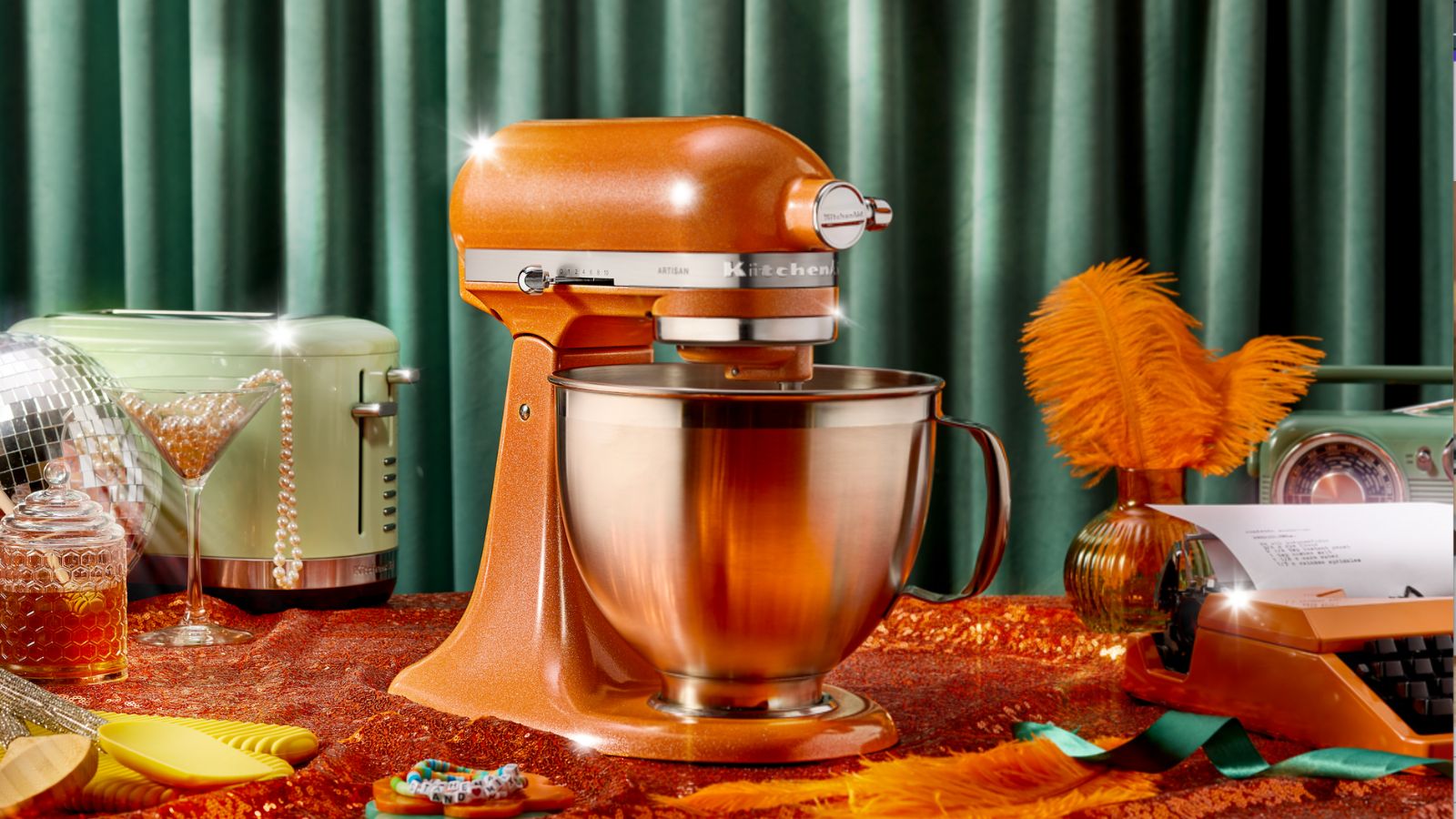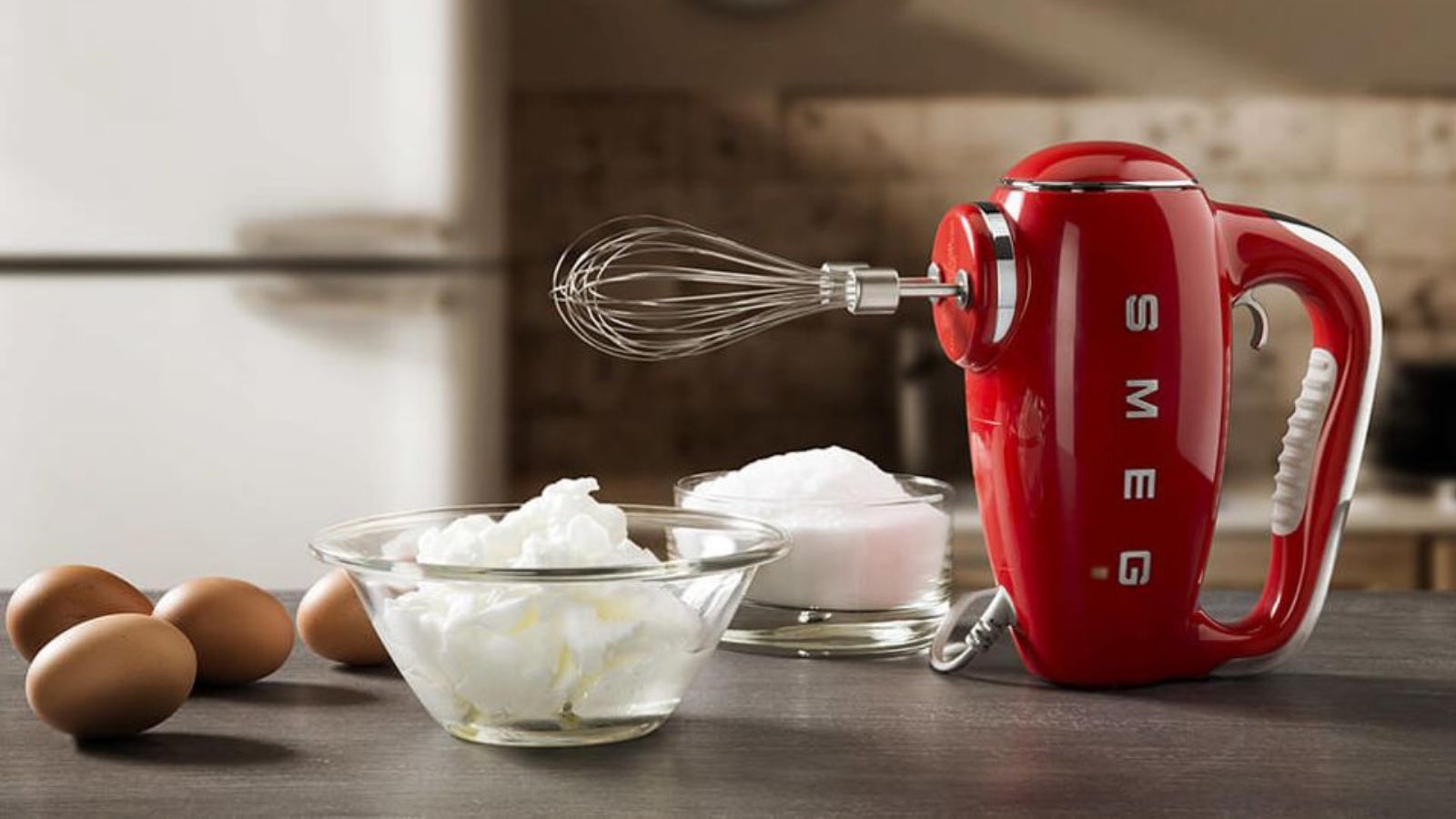Picture this: you’re halfway through whipping up a batch of perfect meringue for a lemon pie. The egg whites are just starting to form soft peaks, and you’re feeling like a true pastry chef. Then, it happens. A sputter, a whine, and then… silence. Your trusty hand mixer has given up the ghost. Before you toss it in the bin and mourn your dessert, the big question pops into your head: Can You Repair A Hand Mixer? The short answer is a resounding yes, often you can! Many common issues are surprisingly simple to fix with a little patience and a few basic tools, saving you money and preventing another appliance from ending up in a landfill.
This guide is your go-to resource for diagnosing the problem, walking you through the repair process, and helping you decide when it’s time to say goodbye. As your dedicated kitchen gadget gurus, we’re here to empower you to understand, fix, and get the most out of your beloved baking companion.
First Things First: What’s Wrong With My Hand Mixer?
Before you start dismantling anything, let’s play detective. Most hand mixer failures fall into a few common categories. Identifying the symptom is the first step toward finding the cure.
- The Mixer is Completely Dead: You plug it in, flip the switch, and get nothing. No sound, no movement, nada. This usually points to a power issue, either with the cord, the plug, or an internal connection.
- The Motor Hums But Beaters Don’t Spin: If you can hear the motor trying to work but the beaters are stuck, the problem likely lies with the gears. Over time, these small plastic or nylon gears can wear down, strip, or break, especially if you’ve been tackling extra-thick cookie dough.
- It Only Works on One Speed: You try to switch from low to high, but it’s stuck on a single speed (or won’t change at all). This typically indicates a problem with the speed control switch or its internal wiring.
- There’s a Burning Smell or Smoke: Stop using the mixer immediately and unplug it. A burning smell is a serious red flag, often signaling an overheating or failing motor. This is one of the more serious problems.
- The Beaters Won’t Stay In: You insert the beaters, and they just fall out or won’t click into place. This is usually a simple mechanical issue with the ejector mechanism or the beater collar itself.

The Big Question: Can You Repair a Hand Mixer Yourself?
Now for the main event. For many of the issues above, a DIY repair is absolutely on the table. If your mixer has a simple power cord issue or worn-out gears, you might be back in business in under an hour. This step-by-step guide covers the most common fixes.
Safety First! Before you even think about opening your mixer, unplug it from the wall. This is non-negotiable. Working on a plugged-in appliance is incredibly dangerous.
What You’ll Need:
- Screwdrivers (usually a Phillips head, maybe a flathead)
- Pliers
- A multimeter (for testing electrical continuity)
- Replacement parts (cord, gears, carbon brushes – often found online by searching your mixer’s model number)
- A clean, well-lit workspace
A Step-by-Step DIY Repair Guide
- Open the Casing: Most hand mixers are held together by a few screws, often hidden under rubber feet or stickers. Carefully remove the screws and gently pry the plastic housing apart. Be mindful of any clips holding it together. Take a picture with your phone once it’s open—this will be your map for putting it back together!
- Inspect the Power Cord: This is the culprit for a “completely dead” mixer about 50% of the time. Look for any visible breaks or frays along the cord. Pay close attention to where the cord enters the mixer’s body, as this is a common stress point. If you have a multimeter, you can test the cord for continuity. A broken wire means you’ll need to replace the entire cord.
- Check the Carbon Brushes: The motor has two small, spring-loaded blocks of carbon that conduct electricity to the spinning part of the motor. Over time, these wear down. They look like small rectangular prisms, often held in place by a small cap or clip. If they’re worn down to nubs, they won’t make proper contact, and the motor won’t run. You can often find replacement brushes for just a few dollars.
- Examine the Gears: If your motor hums but the beaters don’t spin, the gears are your prime suspect. They are usually located at the front of the mixer where the beaters insert. You’ll likely see a “worm gear” on the motor shaft that drives two larger beater gears. Look for stripped or broken teeth. Often, they are covered in grease. You’ll need to clean this off to inspect them properly. Replacing them is usually a matter of pulling the old ones off and pressing the new ones on. Be sure to apply some new food-safe grease when installing the replacements.
- Clean the Speed Switch: If your speeds are acting up, dust and grime (hello, flour!) can get into the speed control switch. Use a can of compressed air to blow out any debris from the switch mechanism. Check for any obviously loose or disconnected wires.
- Reassemble and Test: Carefully put everything back together, referencing the photo you took earlier. Make sure no wires are pinched between the housing halves. Screw it back together, insert the beaters, plug it in, and test it out, starting on the lowest speed.
To Fix or Not to Fix: When to Repair vs. Replace
Just because you can repair a hand mixer doesn’t always mean you should. Sometimes, the cost and effort outweigh the benefits. Here’s how to decide.
You Should Probably Repair It If…
- It’s a simple, cheap fix: A new power cord or a set of gears might only cost $10-$15. If you’re even a little bit handy, this is a very cost-effective option.
- The mixer is a high-quality or sentimental model: If you own a premium brand known for its durability, or if it was a gift from your grandmother, it’s worth the effort to save it.
- You’re environmentally conscious: Repairing is always a greener choice than replacing. Every appliance you fix is one less item in the landfill.
It’s Probably Time for a New One If…
- The motor has burned out: If you saw smoke or smelled that distinct electrical burning odor, the motor is likely shot. A replacement motor is often as expensive as a new mixer, making repair impractical.
- Replacement parts are unavailable or too expensive: For older or obscure models, finding the right parts can be a fruitless search.
- The cost of parts is more than 50% of a new mixer’s price: If a new mixer costs $50 and the parts to fix your old one are $30, it’s probably time to invest in a new, more efficient model with a warranty.
- The plastic housing is cracked or broken: A compromised body can be a safety hazard and is usually not worth repairing.
As professional baker Michael Pham often says, “A reliable hand mixer is the workhorse of a home kitchen. Fixing a simple gear is smart, but don’t hang on to a failing motor. Your time and your batter are too precious to risk a mid-mix meltdown.”
Beyond Repair: A Quick Guide to Choosing Your Next Mixer
If you’ve decided to invest in a new machine, you’ve come to the right place. Choosing the right hand mixer can feel overwhelming, but focusing on a few key features will lead you to the perfect one. Consider this a mini-checklist from our more extensive Ultimate Hand Mixer Buying Guide.
- Power (Watts): Look for a mixer with at least 200-250 watts. This is enough power for most tasks, from whipping cream to mixing cookie dough, without straining the motor.
- Speed Settings: More is not always better. A good mixer should have at least 5 speeds, and crucially, a very slow “start” speed to prevent flour from flying everywhere.
- Attachments: Most mixers come with standard beaters. Look for models that also include dough hooks and a whisk attachment for maximum versatility.
- Ergonomics: How does it feel in your hand? Is it heavy? Is the grip comfortable? This is more important than you think for longer mixing sessions.
Frequently Asked Questions (FAQ)
Q: Why did my hand mixer suddenly start smoking?
A: A smoking hand mixer is a serious sign that the motor is overheating and failing. Immediately unplug it and do not use it again. This is typically not a repairable issue for a home user and means it’s time for a replacement.
Q: Can I use my hand mixer for bread dough?
A: It depends on the mixer and the dough. High-wattage mixers with sturdy dough hooks can handle small batches of soft dough. However, for most bread dough, you risk burning out the motor. A stand mixer is a much better tool for kneading.
Q: How much does it cost to professionally repair a hand mixer?
A: Honestly, it’s almost never worth it. The labor costs at a small appliance repair shop will quickly exceed the price of a brand new, and likely better, hand mixer. DIY repair is the only cost-effective repair option.
Q: Are the beaters from different brands interchangeable?
A: Almost never. Beaters are designed specifically for the locking mechanism and geometry of their corresponding model. Always use the beaters that came with your mixer.
Q: My hand mixer is getting really hot. Is that normal?
A: It’s normal for a mixer to get warm during prolonged use, especially with thick batters. However, if it becomes uncomfortably hot to the touch, you should give it a break to cool down. This is a sign that you are overworking the motor.
The Final Whisk
So, can you repair a hand mixer? Absolutely. For common problems like a faulty cord or worn-out gears, a DIY fix is an empowering, economical, and eco-friendly solution. It connects you more deeply with the tools you use to create delicious food for your family and friends. However, the true wisdom lies in knowing when to grab the screwdriver and when to browse for a new kitchen partner. By understanding the basics of how your mixer works, you’re better equipped to make that call, ensuring many more years of happy, successful baking.